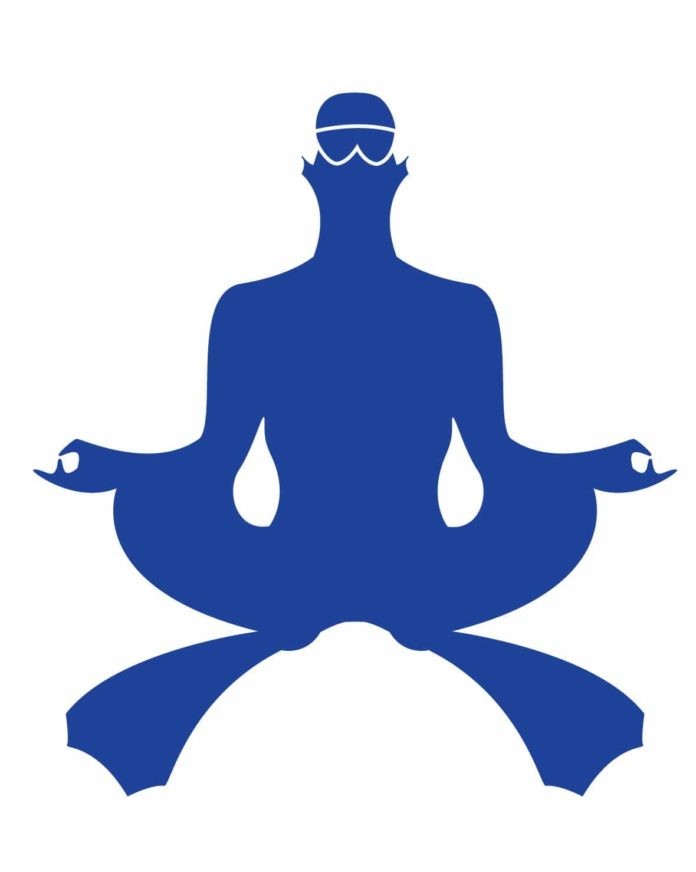Fit for Diving Series : Part 1 (Stretching) | Part 2 (Strength) | Part 3 (Condition)
One of the great things about diving is you don’t need to be particularly strong to take part so it’s accessible to a wide range of ages and body shapes. The most difficult part of diving is often lugging heavy equipment around on dry land to prepare for the relief of weightlessness in the water.
But beneath the surface there are several ways in which a little more strength can improve our dive experience. Most of us use fins to counter water resistance allowing us to move forwards, and in particular Freedivers, who have to swim strongly down through the first 5 -10 metres of water to beat the effects of buoyancy.
Our fins are only as effective as the legs that drive them, so if you can’t exert much muscle force, or aren’t using what you have effectively, you’ll not get far or exhaust yourself trying. That might be fine if all you want to do is potter around a reef, camera in hand. But if you’re caught in current, or need to respond to an emergency at the surface, your strength and endurance will come into play considerably.
When we flutter or monofin kick we use the buttocks and core muscles of the abdomen, pelvic floor and lower back to drive movement forward from the hips. Or at least we should. Many people kick using the lower leg only, bending at the knee as if cycling which uses relatively weak muscles and creates drag. You’ll use your calf muscles to kick rather than their intended purpose which is to keep the toes pointed. If your calves are tight and under-exercised it can lead to cramp. The muscles around the ankles also need to be strong and flexible to stabilise the ankles to prove the whip-like kick, especially for those diving with a monofin.
We can’t change the number of muscle fibres we have, and generally can’t change the type of fibres either. We all have a unique proportion of fast and slow twitch fibres. Fast twitch help with explosive speed – think sprinters. Slow twitch for endurance – think marathon runners. We can only thicken the fibres we have through training to produce more protein. Freedivers tend to benefit from more fast twitch fibres for quick and powerful fin kicks to overcome the resistance of positive buoyancy at the surface and negative buoyancy at depth.
Stability in the core of the torso is part of the finning mechanism, but also helps us to remain hydrodynamic and balanced in the water. We often think of core strength as a six-pack, but the muscles that form this outward symbol of strength are actually quite superficial (I’ll leave you to make your own judgement if that describes the owner too). The deeper abdominal muscles that spread crossways (transverse abdominis) and around the sides of the trunk (obliques) are a key factor in stability. In fact a tight six-pack can actually hinder our ability to breathe effectively as it can depress the rib cage, so you can use that as your excuse!
Freedivers using a monofin to move through the water will want to focus on core strength and lower back flexibility as part of their training regime as this drives the undulation motion like a dolphin. A recent 10 week case study I developed to introduce core strength yoga techniques into a Freediver’s schedule contributed to a 25% increase in performance.
We tend to think of weight training to build muscle strength, and this would be beneficial if we wanted to improve our maximum strength (how much we can push or pull in one contraction). But for diving and swimming what’s needed is elastic or dynamic strength and endurance to repeat the kicks many times over. Weight training can be used, but also consider conditioning and plyometric exercises, circuit training, hill running and yoga.
Yoga isn’t normally associated with strength, but by using our own body weight we can build muscles in correct physical alignment for balance, coordination and ease of movement. All weight-bearing exercise also increases bone density. Examples include static positions such as plank, bridge and boat pose and dynamic sequences like the sun salutation. From a more holistic perspective, strengthening our core promotes structural fitness throughout the body and mind by helping us feel more centred and able to cope with anything trying to ‘throw us off balance’.
So for finning I’d recommend you choose exercises that build strength in the core, bottom (gluteals), thighs (quadriceps), calves and ankles. Good sources of information include Yoga Sport Science Bronze programme, Fitness for Divers by Cameron Martz, Fit for Scuba by Adams and Adams and the PADI ScubaFit programme, or consult your gym or personal trainer (all links here).
If you can manage three times a week you should see an improvement quite quickly, although bear in mind you can also lose strength if you stop training for a week or more. You can maintain your current strength by training once a week. Some elite athletes weight train to build muscle for Freediving, but stop a month or more before a competition so as to reduce the metabolic demand of those muscles on the limited oxygen available on one breath.
You can combine strength training with cardiovascular or endurance training to build overall fitness and the quality and efficiency of movement. Part III for this series will look at some examples. Don’t forget the warm-up and cool-down techniques mentioned in Part I of this series to ensure fluid joint movement and encourage muscle flexibility.
Remember to avoid strenuous activity in the 24 hours following scuba diving or repetitive deep Freediving in case of increasing decompression sickness risk.
Fit for Diving Series : Part 1 (Stretching) | Part 2 (Strength) | Part 3 (Condition)





